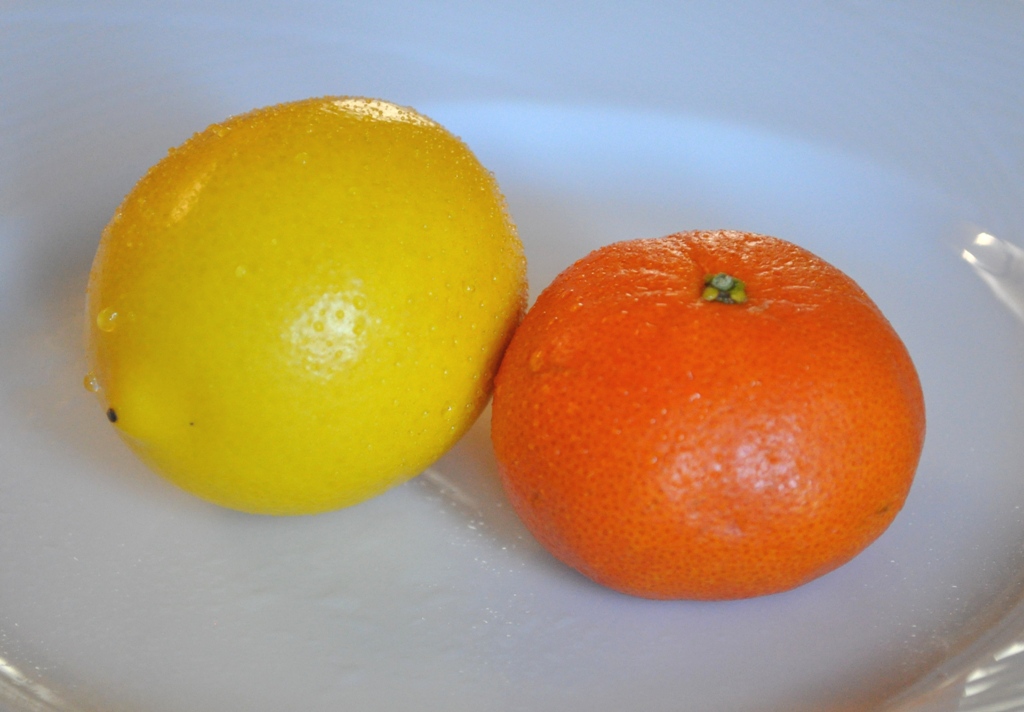What is Food Porn Doing on a Family Recipe Site
Food Porn? Come on, this is a family site!
If you're a food and recipe enthusiast and you're familiar with the many great food blogs and recipe sites online, then I'm pretty sure you're also familiar with the term "food porn".
If not, then food porn is probably not exactly what you might be thinking. After all, this is a family friendly site, so get your thoughts out of the gutter. I think you'll actually find out that food porn is quite wholesome and provides true g-rated entertainment value.
Food porn is a provacative term generally referring to the spectacular presentation of food in advertisements, cooking shows and other visual media including the great proliferation of food blogs on the Internet. The intention of this close-up, glorified presentation of food is to appeal to your eating desire.
For example, the popular food show "Iron Chef" scores high on the scale of spectacular visual presentation of food. The truth of the matter, the show's audience is probably more vicariously entertained watching the food presentations than actually cooking and preparing the recipes and dishes featured on the show.
In the United States, food porn also takes on a slightly negative context when applied to the food industry that some would say goes too far in marketing less than healthy, high fat content, artery clogging food in an irresistable and tantalizing manner.
Across the blogoshpere, food porn, in a mostly "tongue and cheek" manner, refers to the myriad of food blogs that feature spectacular photographs of food. Spectular food photography has most definitely become part of the pop food culture today. If you're interested in food, it's good fun to gaze at the food photography that people are turning out every day.
Have a look at a few of the more popular food porn sites (don't worry, it really is family safe).
For the most part, these are food photography showcase sites. The way it works, food bloggers and food sites submit their best photos to these sites. If the food photos measure up and are approved, they are showcased at these sites with a link back to the submitting food blog or site. This generates web traffic and visibility for the ever-expanding number of food blogs and other food oriented web sites.
It also becomes a sort of contest. It's a vote of distinction to have your food photograph accepted at one of the prominent food photo sites like Foodgawker.com.
At Family Recipe Central, with the ability to include photographs in your recipes and cookbooks, the art and science of shooting compelling food pictures comes up often. An appealing photograph of your food dish will make your recipe more interesting, and it's useful too. When you share your recipes, others can get a better visual idea what the dish is supposed to look like if they get it right.
Creating a family cookbook can be about a showcase of spectacular food photographs, common with many of the commercial cookbooks published these days. But it doesn't have to be. Remember, a family cookbook is also about capturing and preserving the family memories. This can be old photographs, and photos that you scan. The content and rememberance is certainly more significant than the quality and visual impact of the photograph.
But learning how to shoot impressive photographs of food is still worthwhile and fun. And will add a nice dimension to your family cookbook if you're interested.
There is definitely some technique to food photography. It's not as easy as people initially might think. But it's definitely achievable without having to invest a lot of money in your own commercial photography studio.
Here's the general approach ...
- Lighting is key - natural daylight works well, can substitue artificial daylight lamps
- Avoid flash if possible - but flash fill can help eliminate shadows
- Diffused lighting is best
- Close-up shot - in your face close-up is the style
- Shallow depth of field - low f-stop creates a sharp focus up close and blurs the background.
- Shutter speed - under lower lighting conditions, may need slower shutter speed to let more light in
- Tripod - use a tripod to steady the camera. For close-up photography and slower shutter speeds, this is a must
- Composition - a little shot composition helps, arrange the subject matter, keep the attention on the food
- Rule of thirds is effective for composing your shot
OK, I'm by no means an accomplished photographer, let alone a good food photographer, but here's an example of a close-up photograph of fruit, to the left. Click on the image for an enlarged view.
Applying some of the food photography techniques mentioned above ...
close-up composition, a low f-stop, natural daylight through the window, a touch of color saturation, a spritz of water for a few highlights ...
Well, you get the idea. Certainly no award-winning photography here, but photographs like this will work fine for your recipe and cookbook efforts.
Visit some of the food photography showcase sites mentioned above. It's fun entertainment and you'll pickup a lot of great ideas for improving your food photography if you're interested in taking your recipe and cookbook efforts in this direction.
- Login or register to post comments
- Trackback URL


